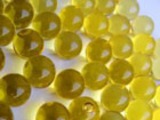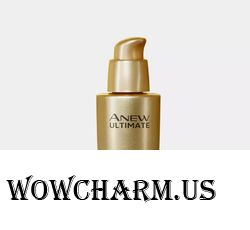in group Female health
Such harmful – useful fats!

But fat - fat discord, and the world of fats is so various and rich that it is possible to get confused and become puzzled. There are fats animal and vegetable (oils), firm and liquid, refractory and fusible.
So what fats bring us benefit and what harm? – you ask. So the question cannot be raised. Both harm, and advantage of fats depends only on their quantity in a diet and combinations. All natural fats and oils are mixes saturated, mono - and polynonsaturated fats. Any conditionally "useful" fat contains a small amount of harmful fats, in any "harmful" - useful.
Fats (differently triglycerides) belong to the class of lipids, and represent natural organic compounds of esters of glycerin and fatty acids. And already these fatty acids share on: Saturated and nonsaturated.
If there is in a molecule of fatty acid at least one free carbon communication which is not connected with hydrogen is a nonsaturated acid if there is no such communication – that saturated.
Saturated fatty acids in a large number (up to 50% of lump) contain in solid animal fats. The exception is made by palm and coconut oils - despite plant origin, their fatty acids belong to saturated. Saturated acids – oil, acetic, margarine, stearin, palmitic, arakhinovy, etc. Palmitic acid – one of the most widespread fatty acids in lipids of animals and plants. In animal fats and cotton oil this acid makes a quarter of all fatty acids. The most richly palmitic acid (nearly a half of the sum of all fatty acids) palm oil.
Nonsaturated fatty acids contain in the basic in liquid vegetable oils and products of the sea. In many vegetable oils contents them reaches 80-90% (in sunflower, corn, linen, olive). In animal fats there are also nonsaturated acids, but their quantity is small. Treat nonsaturated: palmitoleinovy, olein, linoleic, linolenic arakhidonovy and other acids. There is still such subtlety, nonsaturated fatty acids in which molecule one free carbon communication – are called monononsaturated, those at which these communications two and more – polynonsaturated.
• Monononsaturated fatty acids are not irreplaceable as our organism is capable to produce them. The most widespread of monononsaturated fatty acids – oleic acid – contains in large numbers in olive oil, oil avocado and peanut butter. It is considered that this type of acid helps to reduce cholesterol level in blood.
• Polynonsaturated fatty acids (a complex of Omega-6 acids) –
contain in sunflower oil, soy oil, vegetable margarine.
• Polynonsaturated fatty acids (complex of Omega-3 acids). On usefulness degree they are on the first place as possess broad action on various systems of an organism: positively influence warm activity, eliminate a depression, interfere with aging, decrease in informative and mental capacities with age and have the mass of other useful qualities. Treat so-called "irreplaceable" fatty acids which the organism cannot independently synthesize and which have to arrive with food. Their main source – sea fish and seafood, and, the to the north fish lives, the omega-3 is more in her fat of acids. Similar fatty acids are in some plants, nuts, seeds and also the oils received from them. Of them alpha and linolenic acid is main. There is a lot of it in rape, soy oils, linen and ryzhikovy oils. They cannot be subjected to thermal treatment, and it is necessary to add to salads or to accept as nutritional supplement. Completely vegetable omega-3 acid cannot replace sea: only its small part turns in our organism into the same acids which contain in fish.
Fats which we choose
Having compared the most widespread fatty products, we with surprise can notice that on caloric content vegetable oils advance both butter, and fat, and olive oil almost does not contain polynonsaturated fatty acids.
• Sunflower oil (acids omega-6). The most traditional vegetable oil in our latitudes. Contains many polynonsaturated ZhK, but the omega-3 is not enough fats. In it its main minus.
The general content of fat – 98%
Saturated fats – 12 g
Monononsaturated – 19 g
Polynonsaturated 69 g from them: an omega-6 – 68 g; an omega-3 – 1 g
Caloric content – 882 kcal
• Olive oil (omega-9).
The general content of fat – 98%
Saturated fats – 16 g
Monononsaturated –73 g
Polynonsaturated – 11 g, from them: an omega-6 – 10 g; an omega-3 – 1 g
Caloric content – 882 kcal
The percent of content of polynonsaturated acids in olive oil is small, but in it huge amount of oleic acid. Oleic acid is present at membranes of cages of plants and animals and promotes maintenance of elasticity of arteries and skin. At high temperatures it is stable (therefore olive oil well is suitable for frying). And it is acquired better than the others. Olive oil is well transferred even by the people suffering from digestion violations, diseases of a liver and gall bladder. Moreover, such patient even recommend to accept on an empty stomach a spoon of olive oil — it renders light bile-expelling effect
• Linseed oil (source of acids omega-3). An ideal source rare in a usual diet and the most valuable an omega-3 of fats. It is used as nutritional supplement on 1 tablespoon a day.
The general content of fat – 98%
Saturated fats – 10 g
Monononsaturated – 21 g
Polynonsaturated – 69 g including: an omega-6 – 16 g; an omega-3 – 53 g
Caloric content – 882 kcal
• Butter. The real butter contains not less than 80% of milk fat.
The general content of fat – 82.5%
Saturated fats – 56 g
Monononsaturated – 29 g
Polynonsaturated – 3 g
Cholesterol – 200 mg
Caloric content – 781 kcal
Contains vitamins (And, E, B1, B2, C, D, carotene) and lecithin which reduces cholesterol level protects vessels, stimulates immunity, helps to struggle with a stress. It is easily acquired.
 • Fat.
• Fat. The general content of fat – 82%
Saturated fats – 42 g
Monononsaturated – 44 g
Polynonsaturated – 10 g
Cholesterol – 100 mg
Caloric content – 738 kcal
Lard contains valuable polynonsaturated arakhidonovy acid which in vegetable oils in general is absent It is a part of cellular membranes, is a part of enzyme of a cardiac muscle and also participates also in cholesteric exchange. And, on the content of nonsaturated fatty acids fat much more advances butter. For this reason the biological activity of fat is five times higher, than at butter and beef fat.
• Margarine.
The general content of fat – 82%
Saturated fats – 16 g
Monononsaturated – 21 g
Polynonsaturated – 41 g
Caloric content – 766 kcal
Replaces butter, does not contain cholesterol. Differs in the high content of nonsaturated fatty acids. If as a part of margarine the low content of trans-fats (soft margarine) which are formed in the course of a partial hydrogenation (hardening) of liquid oils then its dietary qualities are rather good to replace with it butter.
The only unambiguously harmful fats are trans-fats! Independent researches confirm communication between diets with the high content of trans-fats and coronary heart disease. In 1994 it was established that annually trans-fats are the reason about 30 thousand death from heart troubles in the USA
• Spreads – in fact, the same margarine, but in spreads use of the hydrogenated fats is limited, and in margarine there is practically no such restriction. Besides matters what mix of vegetable fats was used by production of spread.
So what fats and oils to choose (if not to do without them)? Nutritionists still did not come to a consensus what amount of cholesterol (and it is also vital) and fatty acids the healthy person has to receive. So – there is more variety, use all rich natural potential of fats, but be not overzealous with quantity. Everything is good moderately!
Copy the code and insert into a window of creation of record on LiveInternet, previously having included the Source mode there.
HTML-code: 
|
|
| The BB code for forums: |
How will it look?
wowcharm.us → Such harmful – useful fats!

|
But it has also other important functions: supply of an organism with necessary fatty acids (a part of which is irreplaceable) and fat-soluble vitamins of group A, D and E. Fats form a lipidic barrier of our skin, without allowing to evaporate moisture and protecting an integument from drying. Fat helps a body to use proteins and carbohydrates effectively... Read more: |
| "Yoga for women | | | Why there are holes in teeth? Truth and fiction" |
|
Other discussed materials:
It is better to burn down completely, than to become covered with dust)
Fervent Katyusha of Riglis, we wish happy birthday!
Ivetta-52. My baby's dummies of January, 2025
The taxi with adventures
|










